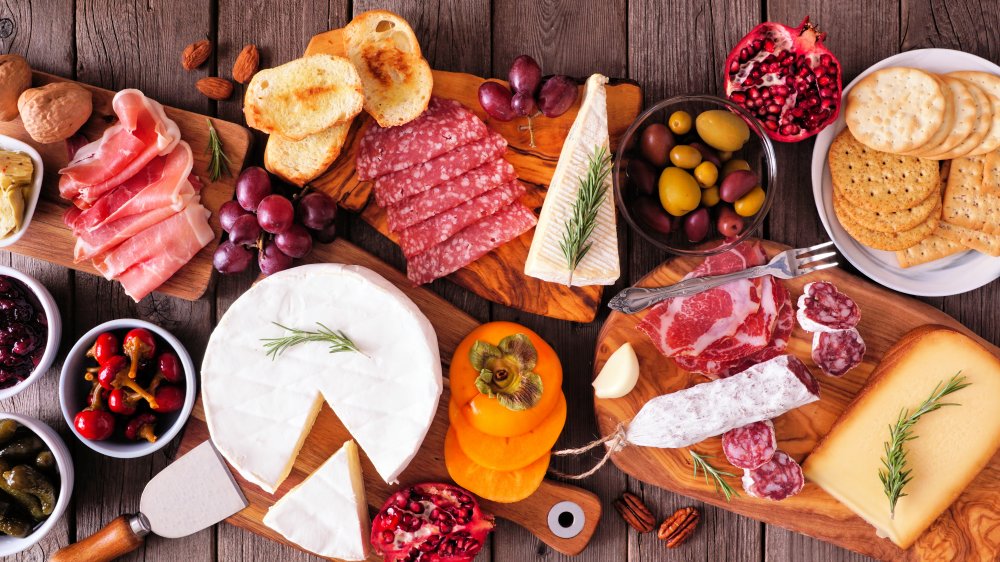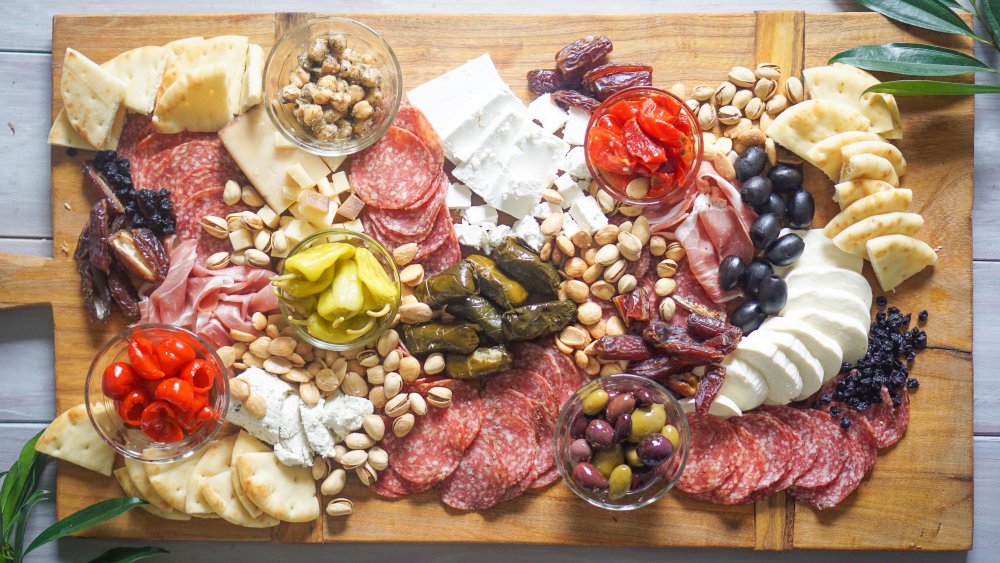The Real Reason Charcuterie Boards Are So Popular
Mindfully placed slices of salami, artfully cut fruits and vegetables, creamy yet contrasting cheeses, a scattering of nuts and olives, and perhaps a couple of cornichons. It seems as though intricately crafted charcuterie boards are everywhere these days. A meat and cheese plate has been an ideal accompaniment for an aperitif for ages, but why just now are these grazing boards getting so much attention?
Before getting into the charcuterie craze of 2020, let's take a look at the history of the dish. Foodicles explains that the French word charcuterie translates to "cooked flesh." Charcuterie is also the name for the specialty shops that deal in all things meaty and preserved, such as dried sausages, pates, and terrines, i.e. one of the places to visit when building a charcuterie board. These shops have been around since the 1500s and their wares are having a real moment in the spotlight today.
Today's fascination with charcuterie boards has less to do with the specifics of what's on the plate, and more with the visual appeal of the whole.
Charcuterie boards can be self-care
In January of 2019, Vox clocked the growing trend of sharing cheese plate photos on Instagram. Author Rebecca Jennings spoke with Marissa Mullen i.e. That Cheese Plate on Instagram. Mullen's account kicked off the charcuterie board trend. Mullen began making visually appealing charcuterie boards and cheese plates for friends and ended up being one of the most popular Instagram accounts in the ever-growing genre of snack sculpture (via Refinery 29). Her Instagram presence translated into TV appearances as well as a book deal. That Cheese Plate Will Change Your Life was published in May of 2020.
Mullen's meat and cheese influencing has paid off, and Progressive Grocer agrees: "Charcuterie and the deliciously gorgeous boards used to serve it have become so popular that Instagram influencers are quitting their jobs to design colorful charcuterie boards full-time." Experts attribute the popularity of handcrafting eye catching boards to a few factors. In an interview with Business Insider, history professor Ken Alaba theorizes that putting together photogenic charcuterie boards brings together craft and food cultures, making for a satisfying DIY experience.
In Mullen's recently published book, she equates putting together an eye-catching board with positive mental health practices: "Cheese plates can be an important form of artistic self-care, like flower arranging or meditative coloring books — but you can eat the results!"

